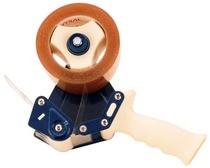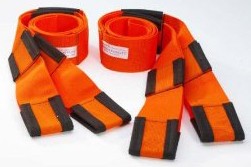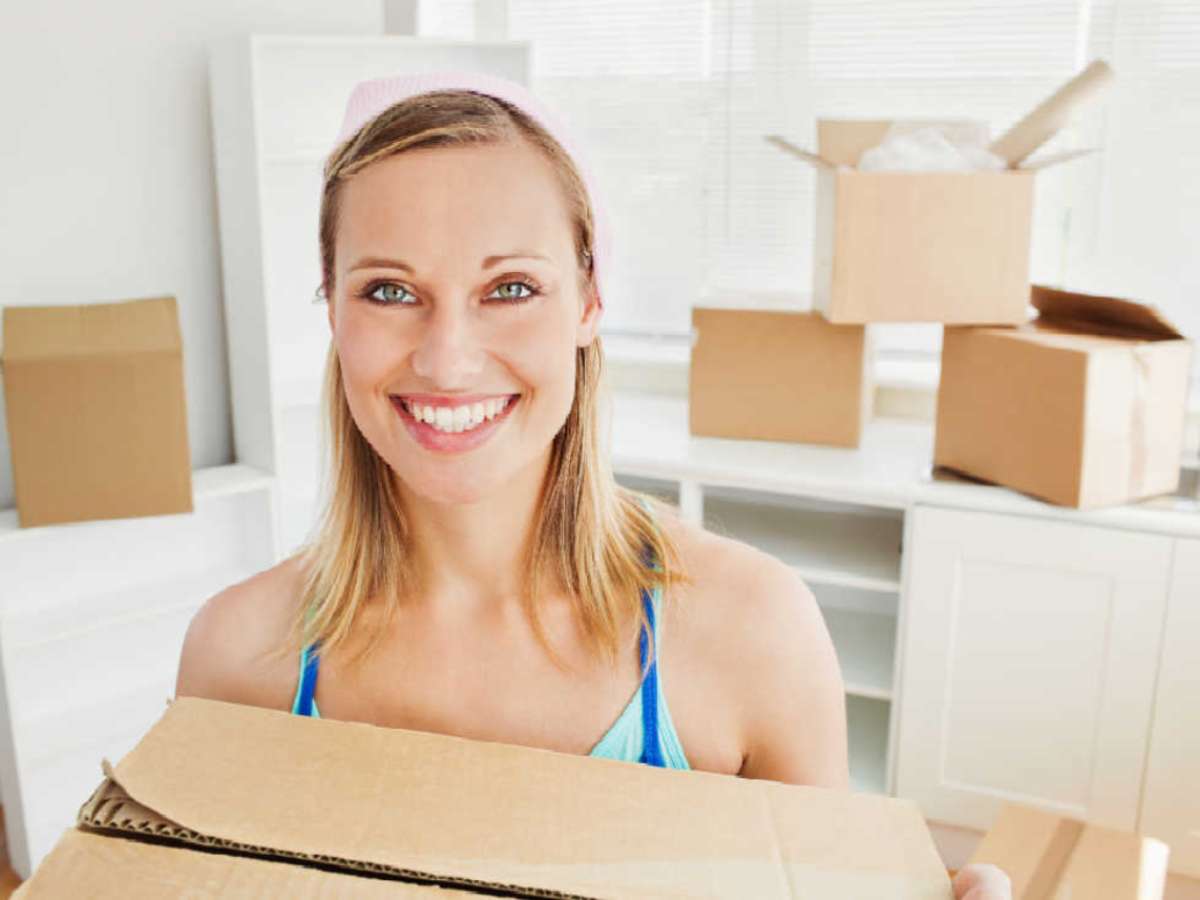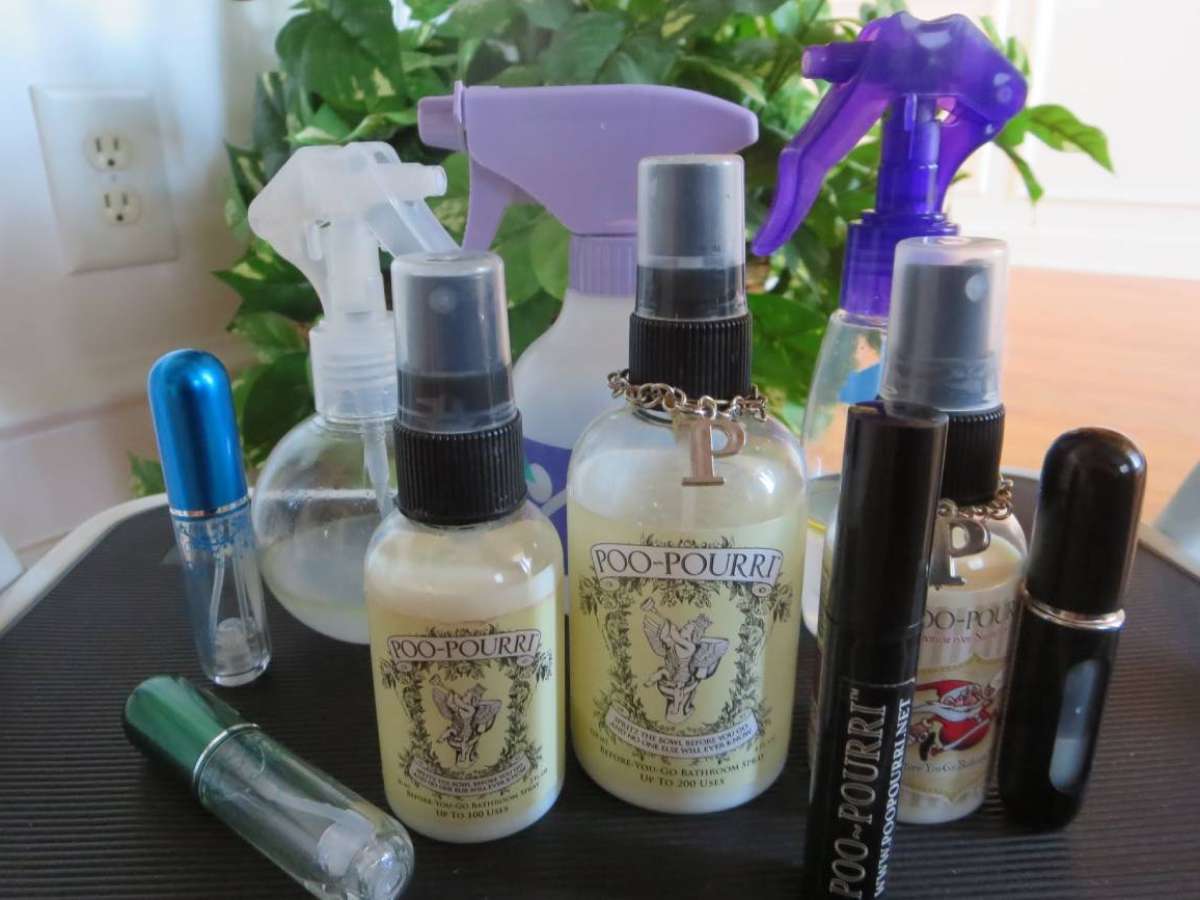 Moving soon? Wondering where to begin in terms of packing and preparing for your move?
Moving soon? Wondering where to begin in terms of packing and preparing for your move?
Following is a list of just about every single item you could possibly need in order to pack for your upcoming move.
If I were you, I would start gathering up these moving supplies now — to ensure that your packing and moving will go really smooth.
I’ve moved 8 times.
Usually, I moved myself — with the help of friends and family. Once, I hired a professional moving company (actually my employer did). Soon, my husband and I will be moving once more (from our home in a subdivision to a log home we are building in the country), and I’m the calmest I’ve ever been about a move. By now, I feel like a pro at moving… I pretty much have packing and moving down to a science at this point.
Here’s everything you need to have on hand in order to pack for your next move…
The Bare Necessities
The following items are required by each and every person who moves.
You can’t get far without these:
![]() Packing tape — it’s wide and is usually clear in color.
Packing tape — it’s wide and is usually clear in color.
 And, since you’ll be using a lot of packing tape to seal up your boxes, you may as well invest the couple of dollars for a tape dispenser too. The dispenser makes it a breeze to tape up boxes with very little effort. We bought our tape dispenser before a move, but now we use it all the time for things like packing up boxes before mailing them somewhere and wrapping Christmas & Birthday gifts.
And, since you’ll be using a lot of packing tape to seal up your boxes, you may as well invest the couple of dollars for a tape dispenser too. The dispenser makes it a breeze to tape up boxes with very little effort. We bought our tape dispenser before a move, but now we use it all the time for things like packing up boxes before mailing them somewhere and wrapping Christmas & Birthday gifts.
![]() Painter’s tape — I use this re-positionable form of tape to lightly secure things in place (like box lids that are being packed inside other boxes) and to tack notes onto certain items. Painters tape can also be used as makeshift labels (on the outside of your packing boxes). And, once your dressers are loaded onto the truck, it makes sense to place the drawers back inside the dressers — just use painter’s tape (that won’t remove the paint from your furniture) in a big “X” to ensure the drawers stay closed during transit. (When you’re done with moving, here are 10 unique things to do with painter’s tape, and some unique uses for painters tape if you have a dog.)
Painter’s tape — I use this re-positionable form of tape to lightly secure things in place (like box lids that are being packed inside other boxes) and to tack notes onto certain items. Painters tape can also be used as makeshift labels (on the outside of your packing boxes). And, once your dressers are loaded onto the truck, it makes sense to place the drawers back inside the dressers — just use painter’s tape (that won’t remove the paint from your furniture) in a big “X” to ensure the drawers stay closed during transit. (When you’re done with moving, here are 10 unique things to do with painter’s tape, and some unique uses for painters tape if you have a dog.)
![]() Sharpies — for writing contents on the exterior of all your boxes (or on painter’s tape in lieu of labels). The thicker Sharpies are better than thinner, fine point markers are. Not only will they last longer, but it’s also easier to see what’s inside a box at a distance. Of course, if you’ve got the time and energy (and you’re overly neat and detailed about things), then you may prefer to use official sticky labels instead of writing directly on the boxes. These could be printed out on your computer, or hand-written. Other things you’ll want to mark on certain boxes with Sharpies or labels:
Sharpies — for writing contents on the exterior of all your boxes (or on painter’s tape in lieu of labels). The thicker Sharpies are better than thinner, fine point markers are. Not only will they last longer, but it’s also easier to see what’s inside a box at a distance. Of course, if you’ve got the time and energy (and you’re overly neat and detailed about things), then you may prefer to use official sticky labels instead of writing directly on the boxes. These could be printed out on your computer, or hand-written. Other things you’ll want to mark on certain boxes with Sharpies or labels:
- “Fragile”
- Which room the items belong in when it comes time to unpack
- Some general idea of the contents inside each box
![]() Packing materials — If you haven’t already, then start collecting these things… now! If you think ahead and start saving the following items as you come across them, then you’ll be a step ahead of the game when moving day arrives. Most of these are items that you probably already have around your house. That, or you are likely to receive these types of things whenever you buy something new. Each and every one of these is a great form of packing material:
Packing materials — If you haven’t already, then start collecting these things… now! If you think ahead and start saving the following items as you come across them, then you’ll be a step ahead of the game when moving day arrives. Most of these are items that you probably already have around your house. That, or you are likely to receive these types of things whenever you buy something new. Each and every one of these is a great form of packing material:
- Bubble wrap — I save all of the bubble wrap I receive in packages that are mailed to me. If you need more, it’s available online and in most department and office supply stores.
- Cardboard dividers — Thin cardboard dividers are commonly found in liquor boxes, boxes of Christmas ornaments, glassware, etc. They are great to keep small, fragile items from bumping together inside a box.
 Foam packing peanuts — I have plastic garbage bags full of these things! Because they’re so small, foam peanuts work well to separate items in your boxes from one another. They can also be used to take up some of the empty space inside boxes.
Foam packing peanuts — I have plastic garbage bags full of these things! Because they’re so small, foam peanuts work well to separate items in your boxes from one another. They can also be used to take up some of the empty space inside boxes.- Inflatable plastic bags — These are few & far between in my packing gear. I save the ones I get from manufacturers who ship items to me, but they’re not commonly used. They work well at taking up huge empty gaps inside your larger boxes, and to keep things from shifting around.
- Foam pads — Sometimes foam pads are included in the packaging of small- to medium-sized fragile items. The “think outside the box” method would be to cut up old foam mattress pads, dog beds, etc. to create your own padding — in the various sizes you need.
- Styrofoam sheets — I’ve saved all of the Styrofoam sheets and pre-shaped packing materials that I’ve received when manufacturers ship things like computers, televisions, scanners, etc. Sometimes I break off a chunk, other times, I re-use them to pack the same items they were intended for.
- Brown kraft paper — Sometimes companies will use sheets of this heavy-duty brown paper to wrap photos and art prints. I keep all that stuff. The DIY method would be to use old grocery sacks and department store shopping bags (you know, those kinds with raffia handles).
- Newspaper — It’s the perfect all-around packing paper. Use it to take up empty spaces in boxes, as well as to wrap items and keep things from bumping inside your boxes.
- Blankets — Sometimes it makes sense to purchase a handful of those heavy-duty moving blankets. In most cases, however, your old raggedy blankets are your best bet. Truth is, I even use our “good” blankets on moving day — because you can never be too safe with your fragile items.
- Sheets & pillowcases — Perfect for wrapping semi-fragile items within boxes. Pillowcases are also great for protecting some plants, lamp shades, and other items.
- Boxes of all shapes and sizes — Duh. If you don’t have boxes, you’re not going anywhere. And yes, I’ve even packed an item in a small box, then again in a larger box for extra protection sometimes.
- Plastic wrap — You won’t believe how handy a few rolls of kitchen plastic wrap will be when you’re packing for your move!
A Word About Moving Boxes…
While businesses affiliated with moving and storage typically sell moving boxes, I usually try to find as many “free” boxes as I can first. Then, I’ll buy a handful of moving boxes for anything else I have leftover, and any odd-shaped items.
Some places to look for boxes:
- Your attic, basement, closets — if you’re anything like me, you’ve been saving the boxes from things that you buy. This may include the packaging that the item is sold with, as well as the cardboard shipping boxes they are delivered to your home in.
- Your garbage – Think: empty diaper boxes and boxes from items you’ve recently purchased.
- Liquor stores – Notorious for small to medium sized boxes, liquor stores typically place the boxes all their bottles of wine and liquor come in right outside their door for the public to use. The bonus is the cell pack dividers that often come inside these boxes!
- Grocery stores – Some stores will even hold boxes for you (or set them on the side of the dumpster) if you ask nicely
- Dumpsters – I’m not encouraging you to go dumpster diving, but a couple of the dumpsters near office supply stores in my area often have nice & clean boxes peeking out of the dumpsters. Dumpsters that don’t have food items in them are your best bet.
- U-haul and other moving & storage companies – The ones in your local area really will have the best moving boxes, if you can’t find enough for free.
- Wholesale clubs (like Costco and Sam’s club) – Either save up the ones they give you when you shop there. Or, stop by before they close some day and ask if they would mind if you took some from their supply.
- Work – Those boxes that printer paper and copy paper come in make awesome moving boxes because they’re thick and have lids that fit perfectly. Which begs the question… do places like Kinkos and other copy shops give away their boxes?
How To Pack Odd-Shaped Items
Even if you don’t invest in “official” moving boxes for the majority of your items, it’s still in your best interest to buy some of the “specialty” boxes that those places offer.
 Mattress boxes — These are very heavy-duty cardboard boxes. You’ll want one for each mattress in your house. Why? Because they really work wonders at protecting such a big clunky item that is generally a chore to get through hallways, and up & down stairways. Not to mention the fact that, due to its bulkiness, a heavy mattress is next to impossible to keep clean while lifting, dragging, and loading it onto the moving truck. At the very least, you’ll probably want to put a disposable mattress cover on your mattresses to give them a basic layer of protection.
Mattress boxes — These are very heavy-duty cardboard boxes. You’ll want one for each mattress in your house. Why? Because they really work wonders at protecting such a big clunky item that is generally a chore to get through hallways, and up & down stairways. Not to mention the fact that, due to its bulkiness, a heavy mattress is next to impossible to keep clean while lifting, dragging, and loading it onto the moving truck. At the very least, you’ll probably want to put a disposable mattress cover on your mattresses to give them a basic layer of protection.

 Wardrobe boxes — I purchased 6 wardrobe boxes in 1998. After that move, I used the same boxes for 3 other moves. And, when I’m not moving, I’m using those same wardrobe boxes for storing seasonal clothing in the attic. Each season, I rotate the items that are stored in the wardrobers.
Wardrobe boxes — I purchased 6 wardrobe boxes in 1998. After that move, I used the same boxes for 3 other moves. And, when I’m not moving, I’m using those same wardrobe boxes for storing seasonal clothing in the attic. Each season, I rotate the items that are stored in the wardrobers.
 Mailing tubes — You’ll want to use mailing tubes for safely moving and storing paper items that serve as memorabilia. Think: posters, children’s artwork, certificates, calendars, etc.
Mailing tubes — You’ll want to use mailing tubes for safely moving and storing paper items that serve as memorabilia. Think: posters, children’s artwork, certificates, calendars, etc.
 Mirror boxes — these long and narrow boxes come in handy for wall mirrors of all shapes and sizes. Plus, I use them to stack small groupings of framed photos and artwork inside.
Mirror boxes — these long and narrow boxes come in handy for wall mirrors of all shapes and sizes. Plus, I use them to stack small groupings of framed photos and artwork inside.
 Frame protectors — Moving and storage companies also sell frame protectors that slip right over the 4 corners of anything that’s framed. This keeps such items secure and evenly spaced while stacked together. I’ve purchased these for a handful of our more expensive pieces of artwork. I also place foam, bubble wrap, newspaper, or corrugated cardboard between the glass portions of each framed item — as an added barrier against breakage between each one. Ultimately, I like to stack as many as will fit in a long narrow box together — usually it’s just 2 or 3 per box.
Frame protectors — Moving and storage companies also sell frame protectors that slip right over the 4 corners of anything that’s framed. This keeps such items secure and evenly spaced while stacked together. I’ve purchased these for a handful of our more expensive pieces of artwork. I also place foam, bubble wrap, newspaper, or corrugated cardboard between the glass portions of each framed item — as an added barrier against breakage between each one. Ultimately, I like to stack as many as will fit in a long narrow box together — usually it’s just 2 or 3 per box.
A word of advice: Pack artificial plants and flower arrangements in boxes. Otherwise they’re likely to lose some leaves, stems, and flower bulbs. (Been there, done that!) For taller artificial trees, your best bet is to use pressure wrap (non-sticky like Saran Wrap, but mega-sized). Wrap it around the plant a few times, and your plants will be in perfect shape when you arrive at your destination!
Check out these tips for moving “live” plants.
These Things Might Also Come In Handy
Especially if you’ll be doing the moving yourself (or with the help of some friends), then you’ll definitely appreciate having these things on hand — in addition to the above-mentioned items:
 Forearm straps or a shoulder dolly — These are great for moving really heavy items. They serve to level out the weight as you lift things like sofas, refrigerators, and armoires, making the item feel much lighter. Plus, they save your back! We bought a set of the forearm forklift straps for our next move. Haven’t tried the shoulder dolly yet, but it comes highly recommended.
Forearm straps or a shoulder dolly — These are great for moving really heavy items. They serve to level out the weight as you lift things like sofas, refrigerators, and armoires, making the item feel much lighter. Plus, they save your back! We bought a set of the forearm forklift straps for our next move. Haven’t tried the shoulder dolly yet, but it comes highly recommended.- Magic Sliders — some people swear by these types of furniture movers. Magic sliders help you physically move things that are really heavy. They make it easier to slide items from one point to another across carpet or hardwood flooring — which is handy any time you’re moving or rearranging furniture.
- Dolly — for hauling boxes and heavy items from the house to the moving truck. Dollies come in all shapes and sizes. Some are foldable (or collapsible) for easy storage.
- Ramp (or something heavy-duty that could be used as a ramp) — to eliminate the need for maneuvering steps when you’re using a dolly to load and unload items on and off the moving truck, or you’re carrying super-heavy items.
- Friends — ’nuff said.
After Your Move, You’ll Need These
And, finally, when you’re ready to start unpacking at your new place, these things will be necessary:
- Pocketknife or a box cutter — for opening boxes and/or breaking down boxes. Yes, scissors will work, but they’re not as handy and easy to manipulate as box cutters.
- Forearm straps, magic sliders — and similar supplies that help you physically move and arrange items in your house, see above.
- Dolly — ramp optional, see above.
- Garbage bags — lots of ’em! Used for disposing of all the packing material you used inside your boxes and all of the tape that secured each box closed.
- Closet space — or space in the attic or basement to store any of the boxes and packing materials you wish to save for your next move!
Check out the top 10 things that break when moving.
I like to help people find unique ways to do things that will save time & money — so I write about “outside the box” Household Tips and Life Hacks that most wouldn’t think of. I’m super-organized. And I LOVE to clean! I even enjoy doing laundry (but not ironing). I’m also a lifelong dog owner — so I often share my favorite tips for living with dogs inside your home (like smart home design choices and dog-friendly cleaning & decorating ideas). Career-wise, I’ve been sharing my best ideas with others by blogging full-time since 1998 (the same year that Google started… and before the days of Facebook and YouTube). Prior to that, I worked in Higher Ed over 10 years before switching gears to pursue activities that I’m truly passionate about instead. For example, I’ve worked at a vet, in a photo lab, and at a zoo — to name a few. I enjoy the outdoors via bicycle, motorcycle, Jeep, or RV. When I’m not cleaning, organizing, decorating, or fixing something… you’ll find me at the corner of Good News & Fun Times as publisher of The Fun Times Guide (32 fun & helpful websites). To date, I’ve personally written over 200 articles about cleaning, organization, DIY repairs, and household hacks on this site! A few have over 2M shares; many others have over 100K shares.





